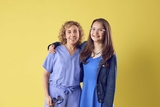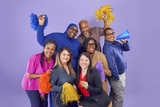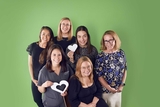CHOP’s global impact on pediatrics

Accelerating breakthroughs
A collaborative infrastructure allows CHOP physician-scientists to dedicate the resources necessary to develop, test and bring to the bedside a gene therapy for an ultra-rare and devastating neurological condition.

Exam room education empowers safety
The Center for Violence Prevention’s Gun Safety Program grows from exam room education to community events and partnerships, resulting in expanded gun safety training and gun lock distribution.

Compassion and collaboration
By normalizing feelings of distress and working closely with caregivers, a resourceful, multidisciplinary team at Voorhees Specialty Care & Surgery Center calms a distraught patient and enables a successful appointment.

Heart to heart
A surgeon’s willingness to listen and provide compassionate reassurance inspires newfound confidence in a long-term ophthalmology patient, Alexa.

An innovative rescue mission
Using 3D printers, a multidisciplinary team creates a simple yet innovative device to ensure staff can rescue patients from behind locked doors.

Hands-on health: A fresh take on fruit
Partnership between educators and CHOP’s Food Pharmacy Program allows local kindergartners to learn about and enjoy fresh, healthy food through a cafeteria fruit stand.

Celebrating environmental services
Environmental Services leadership’s focused efforts on recognition, respect and inclusion boost a team's sense of belonging and engagement.

Making music, mending hearts
An interactive music therapy program, developed specifically for inpatient cardiac infants with external heart pumps, helps babies bond with their caregivers and connects families on similar heart journeys.

Seeing ourselves in art
Following up on the promise of greater diversity and representation at the Center for Advanced Behavioral Healthcare, feedback leads to broader, more inclusive imagery in a waiting room mural.

Hearts connected
An oncology team’s advocacy and shared sense of purpose enable a young inpatient to visit his grandpa – his “#1 person” – one final time.

A questioning attitude, a lifesaving diagnosis
When neurological symptoms surface after a patient's nutritional symptoms are addressed, a clinical dietician's escalation leads to expedited diagnosis and treatment of a brain tumor.